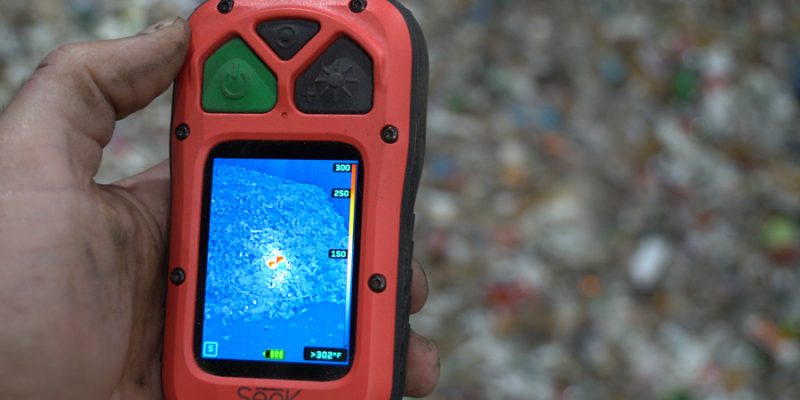Modern fire detection systems have evolved beyond traditional smoke alarms and flame sensors. Contemporary thermal imaging systems provide an exceptional fire hazard detection method that identifies threats in an early stage.
Thermal cameras function through heat detection instead of smoke monitoring or flame visibility, enabling advanced warning systems which help protect people and property from disasters. But what is the operational principle behind this technology?
We will examine thermal imaging science to understand how this technique serves as an efficient system for early fire detection.
The basics of thermal imaging
Thermal imaging systems operate by detecting infrared radiation which every object naturally produces. The quantity of infrared radiation that an object emits depends directly on its temperature level because warmer objects produce more radiation than cooler ones. Thermal cameras utilize infrared detection to transform infrared energy emitted by objects into visual displays, with temperature-based color variations.
Thermal cameras function independently of illumination since they detect thermal signatures without the need for illumination or visibility of the object. Fire professionals rely on them because their ability to spot elevated heat patterns enables small problems to be remedied before a major outbreak occurs.
The principles of heat detection
Thermal imaging functions based on vital operational principles, which make it an effective fire prevention technology:
Emissivity
Different materials emit infrared radiation at different rates. Each material gives off thermal information distinctive to its nature through thermal signatures. These properties exist between metals, wood, and human skin. A thermal camera uses heat output as a basis to identify different materials.
Heat transfer
Fire propagation occurs by three heat transfer methods, which include conduction, convection, and radiation. The detection of thermal radiation patterns using thermal cameras allows staff to identify places where ignitions might occur.
Temperature fluctuations
A properly calibrated thermal camera identifies minimal temperature changes which helps it spot ignition-preventing hot spots in electrical systems, machinery and fuel storage areas.
The principles behind thermal imaging enable users to receive real-time temperature data across every area, which streamlines fire detection before hazards materialize.
Using thermal imaging techniques helps identify potential fires before they begin
The capacity of thermal imaging to detect fires during their initial development stages represents one of its main strengths. Smoke alarms and fire detectors respond to smoke and flames only after they become visible, yet this may result in excessive building damage. Thermal cameras possess the capability to detect thermal deviations before fire ignition happens so responders can take preventive measures.
Thermal cameras operate through the following methods for flame detection before it propagates:
Detecting overheating points
Electrical system overheating appears through faulty wiring, overloaded circuits, and deteriorating electrical components before their complete failure. Thermal cameras detect overheating points through their sensors so maintenance personnel can prevent fires by fixing these problems before they escalate.
Industrial equipment monitoring
Industrial facilities with large equipment containing machinery need continuous thermal monitoring because equipment components tend to overheat due to mechanical breakdowns or extended operation. Thermal imaging technology helps detect early signs of excessive heat, which enables fire prevention efforts.
Spotting heat buildup
Storage facilities that house chemicals and warehouses have materials that may ignite through self-combustion at specific temperature thresholds. Thermal cameras establish continuous surveillance to find irregular heat buildups thus minimizing fire risks.
Wild-fire detection
Thermal imaging has proved itself effective for early wildfire detection in high-risk wildfire areas. The examination of dry areas and forests through scanning helps authorities discover heating points that can prevent damaging out-of-control fires.
Thermal cameras give fire safety professionals the ability to respond quickly through their real-time surveillance and immediate warning system, which minimizes emergency situations before they become severe.
Advantages of thermal imaging over traditional fire detection methods
The numerous benefits thermal imaging brings to fire detection systems drive many industries to choose it as their primary solution.
The technology functions reliably even in completely dark and smoke-filled environments
Smoke detectors and optical cameras depend on visible light for their operational effectiveness. Thick smoke during emergency situations creates conditions where flames become completely hidden from view, thus complicating the ability to determine the situation at hand. Thermal cameras function without visible light, thus they continuously monitor spaces during dense smoke events and total darkness conditions.
Faster response time
Thermal imaging technology reveals heat signatures instead of smoke or flames, which means it can identify developing fires sooner than standard fire alarms. The prompt alert provided by early detection enables firefighters together with safety teams to intervene before fires escalate uncontrollably.
Reduces false alarms
Traditional fire detection systems cause many unnecessary alarms, presenting a significant building safety problem. Different substances like steam, dust or cooking vapors frequently activate smoke alarms without actual fire presence. These cameras track temperature changes instead of airborne particles so there is much less chance of unnecessary alarms.
Enhances firefighter safety
Firefighters use thermal imaging cameras to find their way through burning buildings while searching for victims. Thermal cameras provide smoke-permeable vision, which strengthens rescuer safety by determining secure routes while pinpointing trapped people during emergency operations.
Supports predictive maintenance
Beyond fire detection, thermal imaging plays a crucial role in predictive maintenance. Companies can use thermal imaging devices to check electrical systems, industrial machinery, and infrastructure for excessive heat before failures so they can prevent dangerous fires while decreasing downtime.
The future of thermal imaging in fire detection
Technology advancement has led thermal imaging systems to become progressively better and reach broader accessibility rates. The most exciting new developments in this sector include:
AI automation
Thermal cameras with AI integration analyze temperature patterns through advanced algorithms to enhance detection accuracy. They also conduct automated alert systems, thus requiring less human surveillance.
Drone and satellite monitoring
Recent advances allow drones equipped with thermal cameras to monitor wildfires and survey hazardous areas while providing broader site coverage for large industries.
Smart fire alarms
Thermal imaging serves as a fundamental component of contemporary fire alarm devices for buildings because it enables instant alarm activation, automatic sprinkler responses and emergency response notifications.
Conclusion
Thermal cameras provide the highest level of fire safety through their capacity to track infrared radiation, recognize heat signatures and spotting pre-ignition abnormalities. The application of thermal imaging extends across industrial facilities, power plants, warehouses, as well as wildfire monitoring to safeguard people and infrastructure and protect environmental elements.












Comments